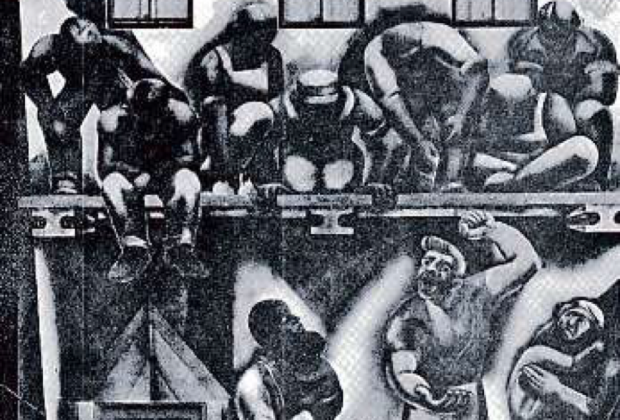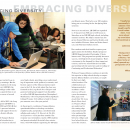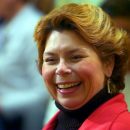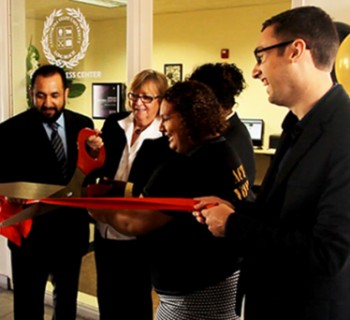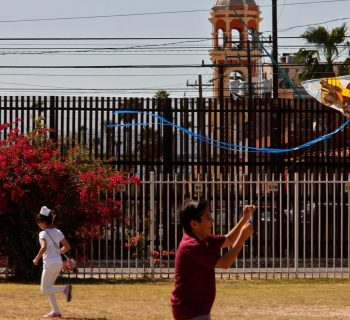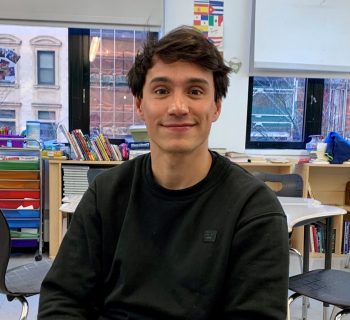Agoniza un mural de Siqueiros en Los Ángeles a espaldas del gobierno Mexicano
Azotado por el sol, la lluvia y el olvido, un monumento artístico del pueblo mexicano --por denominación oficial-- se esconde detrás de una plasta de pintura grumosa que se está cayendo a pedazos.
Para acceder a éste, se coloca una escalera de latón y se trepa hasta la azotea de una iglesia coreana en Los Ángeles. Allá arriba, los rascacielos del centro no se miran tan lejanos.
"Es un patrimonio de los mexicanos de ambos lados de la frontera", define Armando Vázquez Ramos, "El Profe". Lleva subiendo a esa azotea desde 2005, cuando algunos colegas de la comunidad chicana de California hicieron público un descubrimiento que podría considerarse como arqueológico.
Invisible, el mural Mitin obrero, de David Alfaro Siqueiros, se ha resistido a la desaparición durante ocho décadas, con todo en contra. La inmediata censura que sufrió por su contenido sindical y multirracial lo encadenó al anonimato desde 1932.

El mural, primero de tres que Siqueiros pintó en Los Ángeles EN 1932, fue originalmente comisionado por la Escuela de Artes Chouinard, censurado con pintura poco después de ser develado, y erradicado del mapa cuando la institución académica cerró sus puertas.
Garza, ex fotógrafo del mítico diario La Raza y activista chicano, pertenece al grupo de estudiosos del arte, junto con Dave Tourjé y José Luis Sedano, que se negaron a aceptar, como dictaba la versión oficial, que Mitin obrero había sido destruido.
An excellent review of the Long Beach Ethnic Studies Program!
Long Beach Ethnic Studies Program: Embracing Diversity
CSULB COLLEGE OF CONTINUING AND PROFESSIONAL EDUCATION (CCPE)
Expanding Opportunities: Annual Report 2015-2016

Wilson High School students preparing for a presentation on the final day of the Fall 2015 Ethnic Studies Classes
– Photo by: Lidieth Arevalo (CMSC)

Ethnic Studies teacher Joseph Morales in his classroom at Jordan High School - Photo by: Lidieth Arevalo (CMSC)
"Going into this class, I was kind of shy, I wasn't open to other people's cultures, I was really trying to learn about mine a little bit more. But [the class] opened my mind, it broadened my perspective of other people's cultures," Shanon Mendoza, Wilson High School student.
Download the Full CCPE Report here: Expanding Opportunities Annual Report 2015-2016
Upcoming Events
Friday November 4th

Thursday and Friday, November 17th-18th, 2016
Register to COLEF-CMSC's International
Seminar on Migration and Public Policy
El Colegio de la Frontera Norte (COLEF) and the California-Mexico Studies Center (CMSC) will host an international seminar on November 17 and 18, 2016 at the COLEF campus in Tijuana, Mexico; to address the prospects and policy agenda for the 60-million U.S. Latino population, in the aftermath of the U.S. presidential election. The seminar will focus upon issues pertaining to a comprehensive immigration reform, Dreamers on both sides of the border, the role of higher education institutions relative to policy studies and research, and other topics regarding immigration between both nations such as U.S. citizen children exiled in Mexico and Central America, and deported veterans and mothers of U.S. citizens.
- Hermandad Mexicana Humanitarian Foundation, Santa Ana, California
- Comunidad Interdisciplinaria de Estudios Migratorios (CIEM)
- Programa de Estudios sobre Latinos en EEUU, Casa de las Américas
- Centro Tlahuica de Lenguas e Intercambio Cultural (CETLALIC), México
- Seminario Permanente de Estudios Chicanos y de Fronteras (SPECHF), INAH-DEAS
- Coordinadora Nacional de Inmigración 2016, Chicago, Illinois
- Otros Dreams en Acción (ODA)
- Instituto para las Mujeres en la Migración, A.C. (IMUMI)
- Border Angels - Angeles de la Frontera
- Seminar program starts from 9 am to 4:40 pm at COLEF
- Complimentary lunch will be provided
Field research and guided visits to La Casa del Migrante en Tijuana, The Bunker Center for Deported U.S. Military Veterans, and the U.S.-Mexico border at playas de Tijuana.

